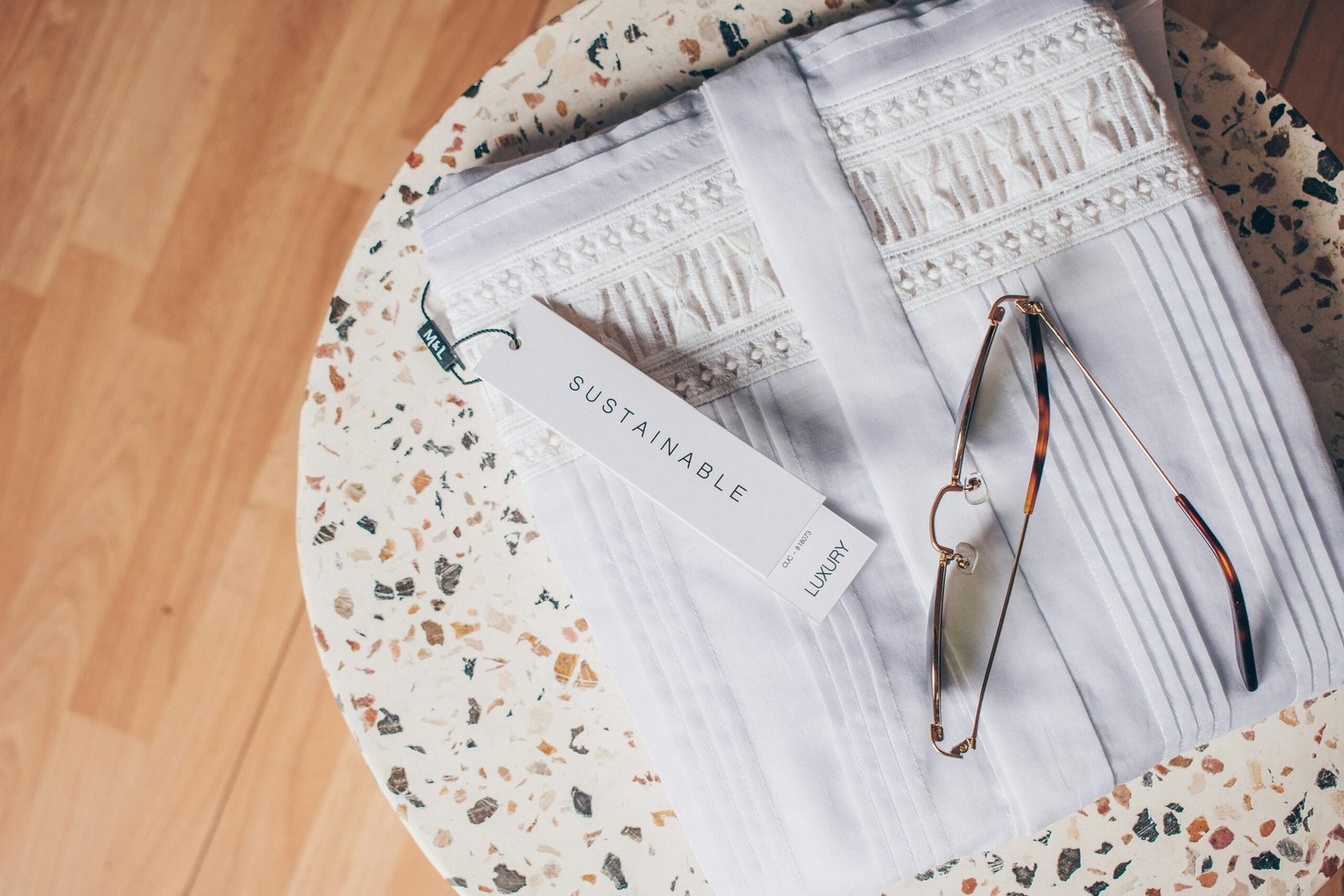
Understanding sustainable fashion involves delving into its multifaceted dimensions that seek to harmonize fashion innovation with environmental stewardship. At its core, sustainable fashion aims to minimize the detrimental impact of the fashion industry on the environment and society. This encompasses the principles of reducing waste, minimizing carbon footprints, ensuring efficient use of resources, and upholding ethical labor practices. Unlike fast fashion, which often emphasizes rapid production and disposal, sustainable fashion champions durability, recycling, and thoughtful consumption.
Environmental Impact of the Fashion Industry
The fashion industry is one of the major contributors to global pollution. According to recent studies, the sector is responsible for approximately 10% of global carbon emissions and nearly 20% of wastewater. The usage of non-renewable resources and hazardous chemicals in textile production exacerbates environmental degradation. Additionally, immense volumes of textile waste, often non-biodegradable, end up in landfills yearly, intensifying the waste crisis. The concept of sustainable fashion seeks to address these issues by promoting eco-friendly materials, sustainable production processes, and closed-loop recycling systems.
Social Factors: Ethics and Fair Labor Practices
Another critical aspect of sustainable fashion is its commitment to ethical labor practices. Traditional fashion supply chains often involve exploitative labor conditions, including low wages, unsafe working environments, and extensive working hours. Sustainable fashion advocates social responsibility, ensuring fair compensation, safe working conditions, and respect for workers’ rights. This shift is significant as it fosters a more just and humane industry where the well-being of the workforce is prioritized.
Consumer Demand and Industry Response
In recent years, there has been a notable increase in consumer demand for eco-friendly products. This shift is driven by greater awareness of environmental and ethical issues associated with fast fashion. Consumers are increasingly seeking brands that align with their values of sustainability and social responsibility. In response, many fashion companies are adopting more sustainable practices, from sourcing organic materials to implementing transparent supply chains. This trend not only reflects a growing market for sustainable fashion but also exerts pressure on the industry to innovate and adapt for a more sustainable future.
Materials and Fabrics: Choosing Eco-Friendly Options
The foundation of a sustainable wardrobe begins with selecting eco-friendly materials and fabrics. One of the most significant advantages lies in natural fibers such as organic cotton, hemp, bamboo, and linen, which provide a less impactful alternative to conventional materials. Organic cotton, for instance, is cultivated without synthetic pesticides or fertilizers, drastically reducing environmental harm and promoting soil health. Hemp, renowned for its resilience, grows quickly and requires minimal water and no pesticides. Similarly, bamboo, known for its rapid growth, utilizes significantly less water compared to traditional crops and boasts natural antibacterial properties. Linen, derived from the flax plant, is durable and sustainable, requiring minimal resource inputs.
On the other hand, the emergence of recycled fabrics has further broadened the scope of sustainable options. Recycled polyester, for instance, is created from post-consumer plastic waste, redirecting potential pollution and lessening the demand for virgin polyester production, which is highly energy-intensive. Upcycled textiles take the concept of recycling a step further by repurposing pre-existing materials into new, high-quality products. This method not only curtails waste but also promotes creative reuse of resources that would otherwise be discarded.
When it comes to identifying truly sustainable fabrics, certifications and standards play a pivotal role. The Global Organic Textile Standard (GOTS) is a prime example, ensuring that textiles labeled as organic meet stringent environmental and social criteria throughout their production. Other reputable certifications include Oeko-Tex Standard 100 and the Fair Trade Textile Standard, both of which offer guidance on fabrics that are both eco-friendly and ethically produced.
As a conscious consumer, prioritizing these eco-friendly materials can profoundly impact the environment. Vigilance when shopping involves checking labels for certifications, questioning the origins of fabrics, and leaning towards brands with transparent and sustainable practices. By doing so, one contributes to a more sustainable fashion industry and fosters positive environmental change.
Building a Sustainable Wardrobe: Practical Tips and Strategies
Creating an eco-friendly wardrobe is not just a trend but a responsible lifestyle choice. To build a sustainable wardrobe, one must start by buying less but investing in high-quality pieces. Instead of purchasing numerous items, focus on sourcing durable, well-made clothing that stands the test of time. Opting for timeless and versatile pieces can significantly reduce the frequency of purchases. Classic styles such as tailored blazers, well-cut jeans, and simple white shirts are not only enduring but also adaptable to different fashion trends and occasions.
Supporting ethical brands is another crucial step in promoting sustainable fashion. Many brands today are committed to fair labor practices, sustainable production methods, and transparency in their supply chains. By choosing to buy from these companies, consumers can drive demand for more eco-conscious practices in the fashion industry. Therefore, it’s important to research and support brands that share values aligned with sustainability and ethical considerations.
Second-hand shopping and clothing swaps are excellent ways to cultivate a sustainable wardrobe while minimizing environmental impact. Thrift stores, consignment shops, and online vintage platforms offer countless opportunities to find unique, pre-loved items. Participating in clothing swaps with friends or community groups can also refresh your wardrobe without contributing to the demand for new clothing production. These practices prevent garments from ending up in landfills and promote a circular fashion economy.
Another effective strategy is repairing instead of discarding garments. Basic sewing skills can extend the life of your clothes, whether it’s replacing buttons, mending tears, or altering fit. Embracing a mindset of repair and reuse ensures that pieces remain functional and reduces waste.
A minimalist approach to fashion can amplify sustainability efforts. By curating a more intentional wardrobe, based on the principle of “less is more,” individuals can significantly mitigate the environmental impact of fashion. Organizing your wardrobe to maximize sustainability involves regular decluttering, thoughtful storage solutions, and rotating garments to ensure an evenly worn collection of clothing. Implementing these strategies can make your wardrobe more manageable, environmentally friendly, and stylish.
Caring for Your Clothes: Extending the Life Cycle of Your Wardrobe
Proper care and maintenance of your clothing play a pivotal role in promoting sustainable fashion. By taking deliberate steps to extend the life cycle of your wardrobe, you can minimize ecological impact and contribute to a more environmentally-friendly lifestyle. Firstly, washing your clothes in a sustainable manner is essential. Opt for cold water cycles whenever possible, as heating water accounts for a significant portion of energy consumption during laundry. Furthermore, using eco-friendly detergents without harsh chemicals can not only preserve the fabric quality but also reduce the release of harmful substances into the waterways.
Air drying your clothes is another effective way to conserve energy. While the convenience of tumble dryers is undeniable, they are energy-intensive and can cause wear and tear on delicate fabrics. Whenever weather permits, hang your clothes to dry naturally. This practice not only reduces energy usage but also helps maintain the integrity of the garments.
Proper storage is equally critical in prolonging the life span of your wardrobe. Store clothes in a cool, dry place away from direct sunlight to prevent discoloration and degradation of fabric. Using padded hangers for delicate items and sturdy ones for heavier garments can help in maintaining their shape. Ensure that items like sweaters are folded rather than hung to avoid stretching.
Moreover, addressing minor damages promptly can significantly extend the usability of your clothes. Learning basic mending techniques, such as sewing on buttons or fixing small tears, can be immensely beneficial. Simple alterations, like hemming pants, can also give garments a renewed look and fit, thus encouraging their continued use.
By keeping your clothes in use for longer periods, you make a substantial positive impact on the environment. Extending the lifecycle of your wardrobe reduces the demand for new garments, thereby conserving resources and decreasing waste. Sustainable fashion is not just about making eco-friendly purchases; it is equally about maximizing the longevity and functionality of what you already own.


